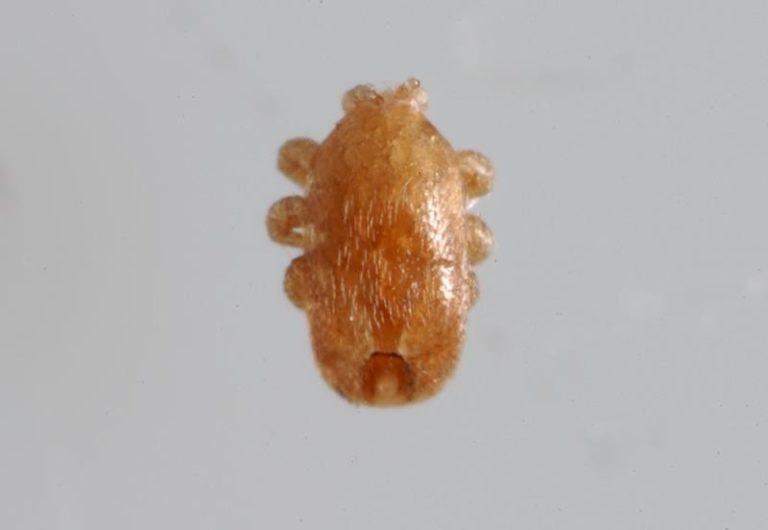
- These hide in brood cells rather than on adult bees.
- They have elongated bodies about 1mm long and 0.5mm wide
- and are reddish brown.
- Image Courtesy The Animal and Plant Health Agency (APHA), Crown Copyright
Signs of Tropilaelaps mite in a colony include:
- irregular or poor brood patterns
- surviving adult bees having a shorter lifespan
- adult bees with shrunken or deformed wings and abdomens
If you suspect the Tropilaelaps mite is present within your colonies you must:
- contact the NBU office or your local bee inspector immediately
- not remove any colonies, equipment or honey from the site until approved to do so by the NBU
Tropilaelaps mite are not currently thought to be present in the UK. Import regulations are the main defence against its introduction.
